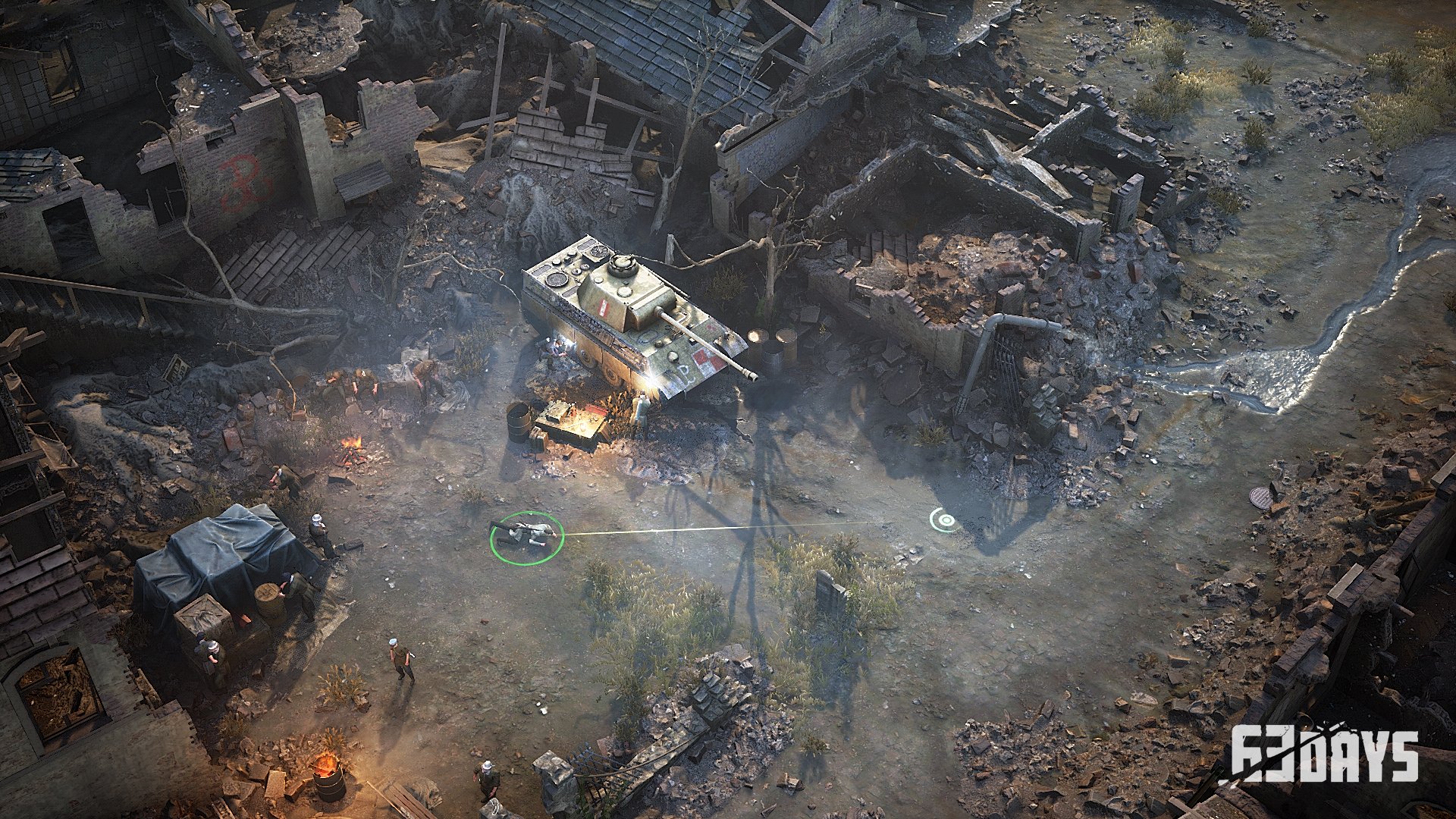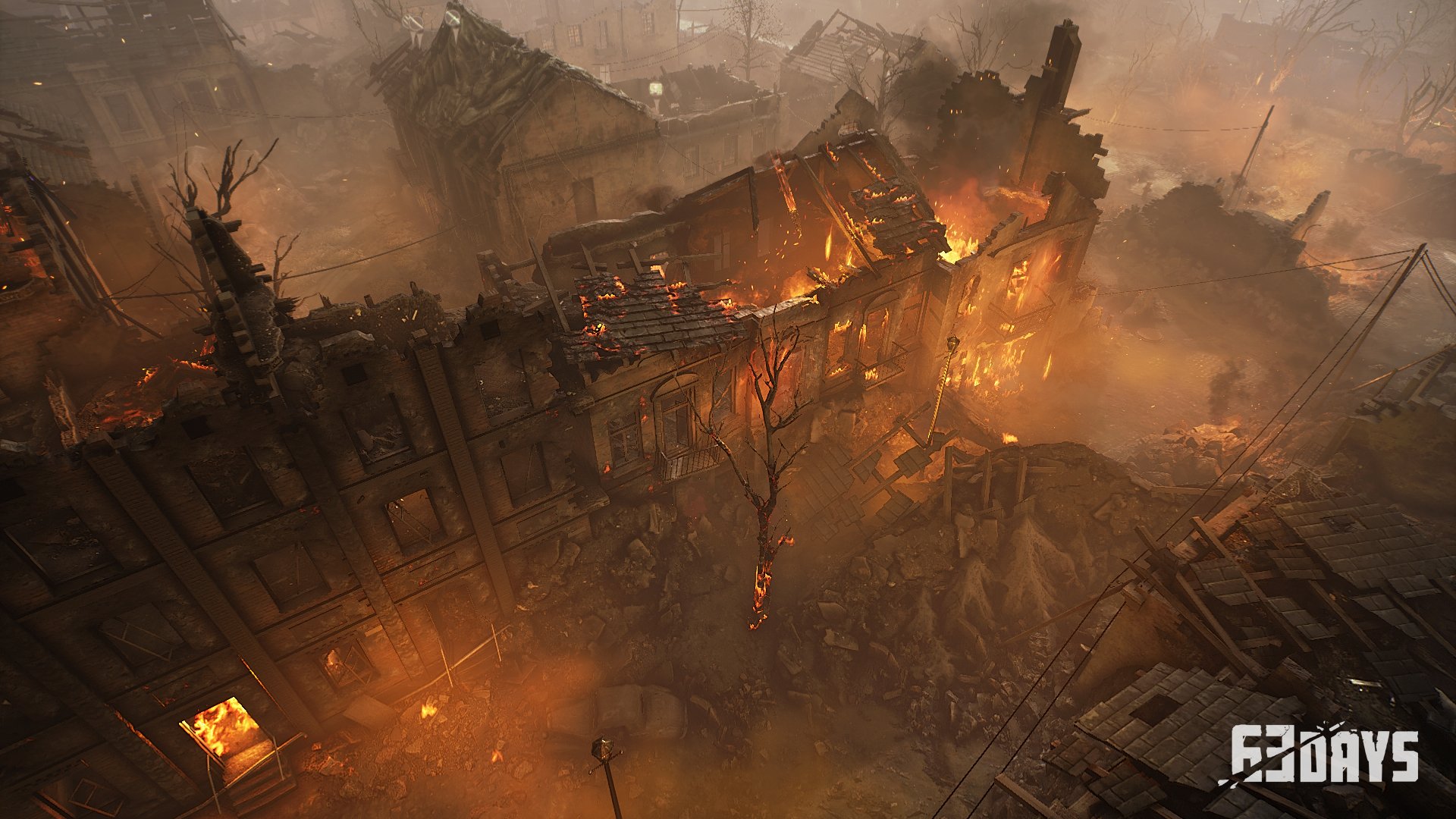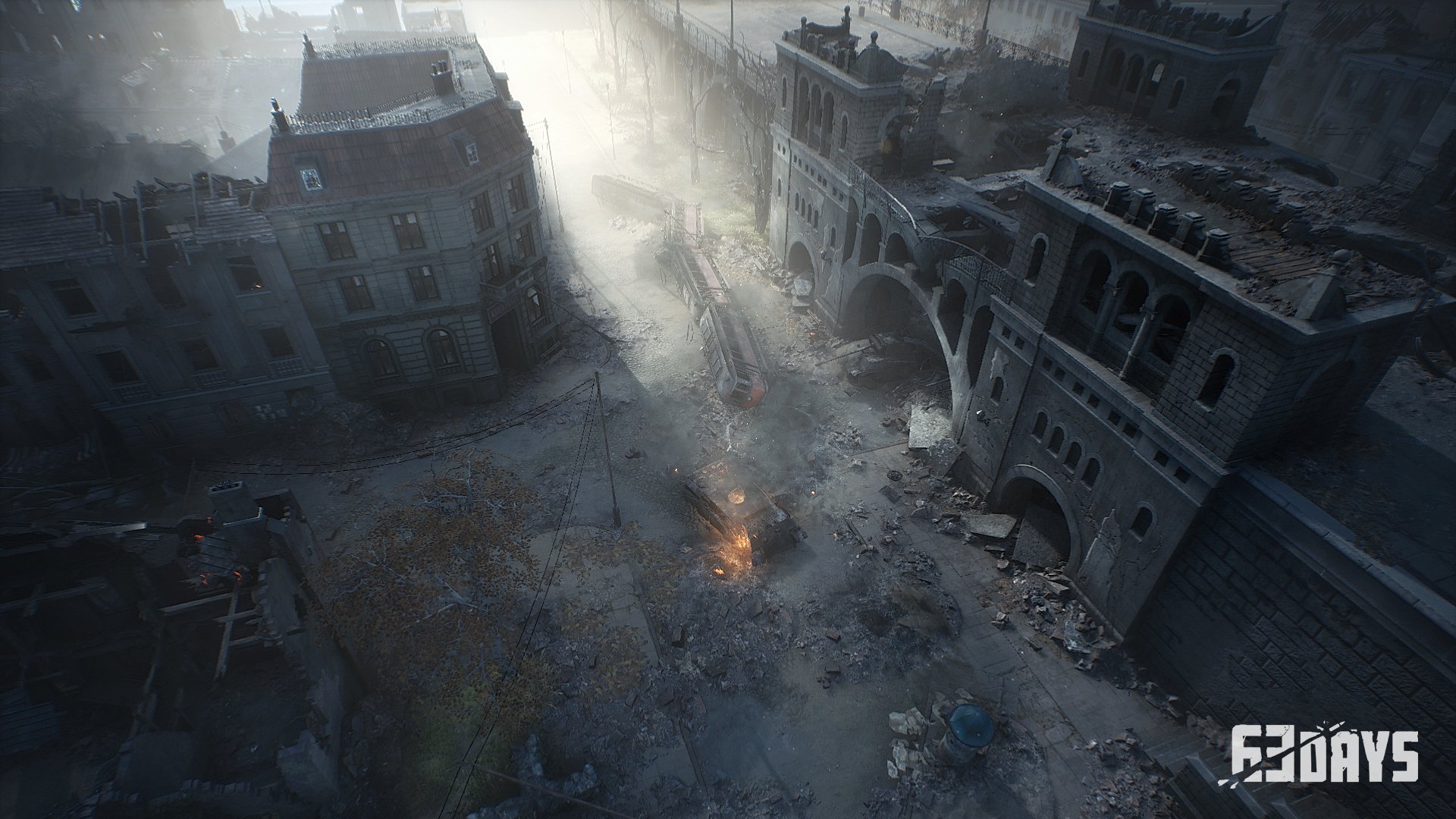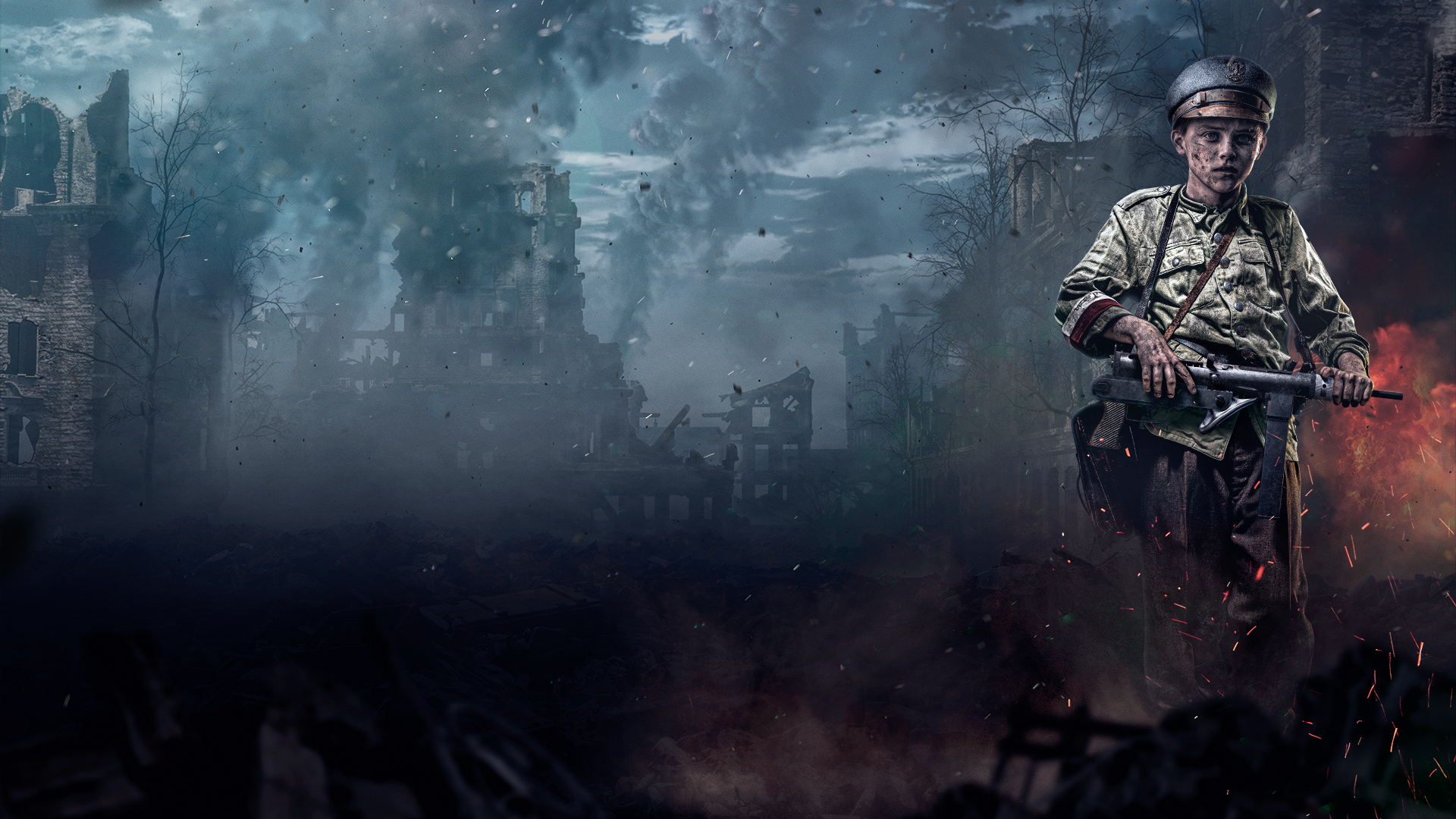The short-lived Polish rebellion against Nazi forces during WWII is one of the lesser promoted aspects of the early phases of the war. Though it was clamped down upon in quick fire fashion, the resistance movement demonstrated the ferocious will and courage of the local Polish population against their invaders. Warsaw explored this period in 2019 and now 63 Days is delving into it for some tactical squad-based action, too.
63 Days has the markings of a solid and dependable rifle, but it’s sadly prone to jamming repeatedly at almost every sneaky step it attempts. The top-down, birds-eye-view of proceedings lends it a Peaky Blinders: Mastermind appeal. However, unlike Tommy Shelby’s band of rough miscreants, these freedom seeking brothers fail to synchronise their actions to create something satisfying. Instead, your time will likely be spent looking at the game over screen and loading your quick saves ad nauseam. If the resistance itself was always doomed to fail, then 63 Days encapsulates that dejection unintentionally well.
War-Sore
Hitler’s forces have occupied Poland and it’s the turn of the people to challenge German rule. It’s an unstoppable war machine against the ragtag band of civilians masquerading as Rambo. Naturally, this creates a rather ideal backdrop for a tactical, stealth orientated game about avoiding detection cones and sneakily backstabbing officers. Over the course of six campaign missions, 63 Days does its best to pit you in unique scenarios to overcome significant challenges and create a brighter future for Poland. Of course, if you know the history behind this resistance movement, you likely know how successful this is.
There are five characters you’ll control throughout the campaign, usually 2 or 3 in any given mission. Each has their own unique abilities, like Youngster who can utilise a throwing knife or rock throw, or Helga who can heal teammates. Levels are large, sprawling areas with dozens upon dozens of hostile troops, meaning detection is a sure fire way to being obliterated. Stealth and clever use of abilities is the name of the game here, which encourages creative problem-solving to achieve your objectives and escape unscathed.
While each character does have different abilities, they’re lacking in flair or real diversification. Storm can knife people in the back, while Lynx can strangle enemies… from behind. Youngster can throwing knife a Nazi provided he’s only two feet away, but it makes so much noise you’re better off using the knife or strangle move, for example. Character classes and using the tactical mode to line up synchronised moves should be the best element of a game like this, but 63 Days is missing that extra bit of depth to make it compelling.
Missions and objectives are generally varied and interesting, but the means of completing them feels rather formulaic as a result. I found the stealth mechanics to be clunky and awkward. Button inputs can lag or double-layer, causing unnecessary alerts. Syncing up moves doesn’t actually make the characters use them at the same time, requiring constant babysitting and micro-management, which saps the joy out of simultaneous kills. Moreover, pathfinding and AI can be a nightmare far too often, causing all kinds of mishaps and errors. The group has the pluck and spirit to make a fight of it, but they’re using outdated and broken tools.

Run-and-Done
Due to these problems, while most of my mission timings would say 1-2 hours to complete a level, the reality would actually be 3-4. The reason? Saving and reloading is more essential here than cracking the Enigma code was to succeeding in the battle of the Atlantic. Save-scumming is a common problem in stealth-orientated games, but I genuinely found myself reloading, without fail, every few seconds. The composition of ludicrous numbers and groups of Nazi soldiers means some areas are nigh-on impossible to navigate without constant quick saves, and that doesn’t make for a fun experience.
One side objective was so obstructively rage-inducing in its design, I genuinely don’t know how it can be completed in stealth. Enemies almost ubiquitously have another pair of soldiers looking at them at all times, and distraction abilities sometimes just… don’t work? It’s confusing and inconsistent, which is a killer for satisfying stealth mechanics. When it works, and you pull off a beautiful clearing of an entire area, it feels great. Unfortunately, almost double my actual gameplay time was spent saving and reloading, staring at menus until I could barely stomach playing anymore.
Detection isn’t an automatic fail, in theory. There is a “combat mode” your squad can enter, where your characters control as in twin-stick shooter format. However, the enemy AI has the uncanny ability to lob grenades over 20 foot walls with no line of sight and kill you instantly. Moreover, you die in 1-2 hits on Normal difficulty, so open combat is a death sentence. The only solution? Funnel enemies through a bottleneck and gun them down, hoping you have enough ammo to kill them all. Is it fun? No. But it works.
In two scenarios, I basically had to take this approach just to progress the mission. The stealth systems simply weren’t robust enough for me to overcome the area, so cheesing worked more efficiently. I like that 63 Days does offer a mix of stealth and combat options, but neither feels especially great. Remaining undetected is laborious and constant trial-and-error, while open combat is a crap-shoot of luck and bad AI. I really don’t want to sound overly critical of a game that tries to do the basics but doesn’t quite get it right, but I struggled to take much enjoyment at all from 63 Days’ gameplay.

63 Nays
A major portion of the gameplay’s issues lie with the controls. I played 63 Days on console with a controller, and boy was it tricky. You hold L1 and use the D-Pad to select one or more characters to control at a time. However, the skills of the last selected character are the only ones that can be selected (with R1 and the D-Pad). If you want to use multiple abilities in double quick time, enjoy the finger contortion mini-game. The amount of times I accidentally selected the wrong ability, or caused one of my team to walk into open gunfire was laughable. It had to be, because otherwise I’d have cried incessantly.
After about 4-5 hours, the controls issues eased somewhat, but for it to take that long will put off a lot of players. There’s a universe where 63 Days refines its mechanics and control scheme and comes out a very good game, but this sadly isn’t that timeline. What is better is the presentation of occupied Poland. Bombed out buildings, bloody remnants of war crimes, fires erupting in the aftermath of the German invasion. Environmental detail is great and animation work is generally very good – from dumping bodies in hidey-holes and spewing bullets with a submachine gun, 63 Days can hold its own.
Story-wise, it’s a little less straightforward. The cutscenes are semi-dynamic stills with relatively good voiceover work, but the core premise of two brothers leading a band of resistance fighters isn’t especially compelling. It has moments of intrigue and collectible items have a nice authenticity to add to the immersion of the period, but it’s not a tale that’ll be passed down through the generations, unlike the real-life counterpart. I did appreciate the constant fourth wall breaking jokes about how your controllable characters are the only ones who can ever do anything useful though, that was amusing.
It all left me quite deflated and oftentimes, quite frustrated. The large maps with numerous varied objectives held the premise of this organic, immersive-sim potential for tactical creativity. However, the potential never really materialises into something actually compelling. I wanted to like 63 Days and there are small caliber rounds that occasionally land a hit, but almost every other weapon in this resistances’ arsenal backfires.

A Spark, Snuffed Out
When I ruminate on my time with 63 Days, I’m left with a feeling of disappointment at what could have been. A tactical experience inflated by constant reliance on save scum strategy. The control scheme caused more headaches than Polish vodka inflicts on unprepared foreigners. Mechanics that occasionally shine but too often lack the depth and precision to be continually engaging. Core concepts are in place and are so close to forming an effective hit-and-run guerilla squad, but then everything goes awry in the execution.
For history buffs and those interested in the story of Polish rebellion, there’s something in 63 Days worth seeking out. The setting and authenticity does lend it an air of grace to an extent, the problem will come from playing the game for any significant length of time. Despite a full campaign of six missions, a co-op mode and challenges to master, I can’t see very many people overcoming its multitude of flaws to get the most out of the whole package. Whether that’s alleviated somewhat on PC is worth checking out, where a mouse and keyboard may solve some of the control issues, but on console it’s a frustrating slog.
Even so, I applaud the efforts of the developers to take on the time period and bring attention to a less well known time of World War 2. Whether it be through post-launch support to smooth out the experience or using the learning from this game to take forward into a new title, I do look forward to what Destructive Creations do next. As it is for 63 Days, however, I suspect the title reflects the sheer amount of time I spent staring at the loading screen page.
63 Days is available now on PlayStation 5 (review platform) PlayStation 4, PC via Steam, Xbox One and Xbox Series S/X.
Developer: Destructive Creations
Publisher: Destructive Creations
Disclaimer: In order to complete this review, we were provided with a promotional copy of the game. For our full review policy, please go here.
If you enjoyed this article or any more of our content, please consider our Patreon.
Make sure to follow Finger Guns on our social channels –Twitter, Facebook, Twitch, Spotify or Apple Podcasts – to keep up to date on our news, reviews and features.
